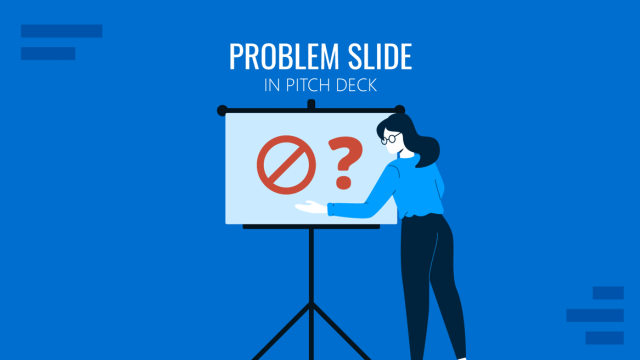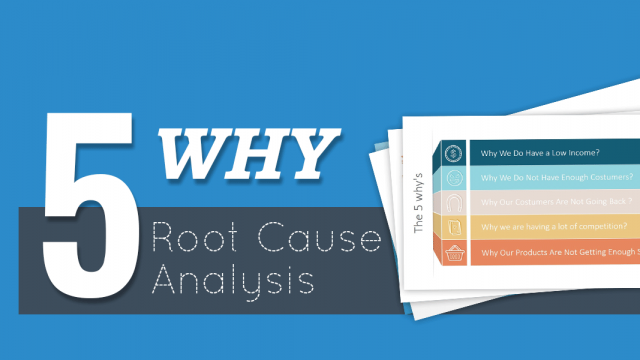
Problem-solving capability and effective decision making are two of the most prized capabilities of any leader. However, one cannot expect these traits to be simply present by default in an individual, as both require extensive analysis of the root cause of issues and to know what to look for when anticipating a gain. In a previous article, we brought you 5 Problem-Solving Strategies to Become a Better Problem Solver. This time we have something that can help you dig deep to resolve problems, i.e. using heuristic problem-solving methods for effective decision-making.
What are Heuristics?
Heuristics are essentially problem-solving tools that can be used for solving non-routine and challenging problems. A heuristic method is a practical approach for a short-term goal, such as solving a problem. The approach might not be perfect but can help find a quick solution to help move towards a reasonable way to resolve a problem.
Example: A computer that is to be used for an event to allow presenters to play PowerPoint presentations via a projector malfunctions due to an operating system problem. In such a case a system administrator might quickly refresh the system using a backup to make it functional for the event. Once the event concludes the system administrator can run detailed diagnostic tests to see if there are any further underlying problems that need to be resolved.
In this example, restoring the system using a backup was a short-term solution to solve the immediate problem, i.e. to make the system functional for the event that was to start in a few hours. There are a number of heuristic methods that can lead to such a decision to resolve a problem. These are explained in more detail in the sections below.
Examples of Heuristic Methods Used for Challenging and Non-Routine Problems
Heuristic methods can help ease the cognitive load by making it easy to process decisions. These include various basic methods that aren’t rooted in any theory per se but rather rely on past experiences and common sense. Using heuristics one can, therefore, resolve challenging and non-routine problems. Let’s take a look at some examples.
A Rule of Thumb
This includes using a method based on practical experience. A rule of thumb can be applied to find a short-term solution to a problem to quickly resolve an issue during a situation where one might be pressed for time.
Example: In the case of the operating system failure mentioned earlier, we assume that the PC on which PowerPoint presentations are to be run by presenters during an event is getting stuck on the start screen. Considering that the event is about to start in 2 hours, it is not practical for the system administrator to reinstall the operating system and all associated applications, hotfixes and updates, as it might take several hours. Using a rule of thumb, he might try to use various tried and tested methods, such as trying to use a system restore point to restore the PC without deleting essential files or to use a backup to restore the PC to an earlier environment.
An Educated Guess
An educated guess or guess and check can help resolve a problem by using knowledge and experience. Based on your knowledge of a subject, you can make an educated guess to resolve a problem.
Example: In the example of the malfunctioning PC, the system administrator will have to make an educated guess regarding the best possible way to resolve the problem. The educated guess, in this case, can be to restore the system to a backup instead of using system restore, both of which might take a similar amount of time; however, the former is likely to work better as a quick fix based on past experience and knowledge of the system administrator.
Trial and Error
This is another heuristic method to problem-solving where one might try various things that are expected to work until a solution is achieved.
Example: The system administrator might try various techniques to fix the PC using trial and error. He might start with checking if the system is accessible in safe mode. And if so, does removing a newly installed software or update solve the problem? If he can’t access the system at all, he might proceed with restoring it from a backup. If that too fails, he might need to quickly opt for a wipe and load installation and only install PowerPoint to ensure that at least presenters can run presentations on the PC. In this case he can perform other required software installations after the event.
An Intuitive Judgment
Intuitive judgment does not result from a rational analysis of a situation or based on reasoning. It is more of a feeling one has which may or may not lead to the desired outcome. Sometimes, intuitive judgement can help resolve problems. Perhaps the most rational way to describe an intuition is that it is some type of calculation at the subconscious level, where you can’t put your finger on the reason why you think something might be the way it is.
Example: The system administrator might have a feeling that the PC is not working because the hard drive has failed. This might be an intuitive judgment without hard evidence. He might quickly replace the hard drive to resolve the problem. Later, after he runs diagnostics on the old hard drive, he might realize that it was indeed that hard drive that was faulty and trying to fix it would have been a waste of time. In this case, he might be able to solve a problem using intuitive judgment.
Stereotyping
A stereotype is an opinion which is judgmental rather than rational. Certain types of possessions for example create a stereotype of social status. A person who wears an expensive watch might be deemed rich, although he might simply have received it as a gift from someone, instead of being rich himself.
Example: A certain company might have developed a bad reputation of developing faulty hard drives. If the systems administrator sees the name of that company on the hard drive when opening the faulty PC, he might think that the hard drive is faulty based on stereotyping and decide to replace it.
Profiling
Profiling is used to systematically analyze data to understand its dynamics. Profiling as a heuristic method for problem-solving might entail analyzing data to understand and resolve a problem or to look for patterns, just like a root cause analysis.
Example: To solve the issue of the faulty PC, a system administrator might look for similar patterns which might have led to the problem. He might search online for solutions via online forums to understand what might have caused the issue. He might also look at the information associated with recently installed software and updates to see if something conflicted with the operating system. During the profiling process, he might realize that software he installed yesterday before shutting down the PC is the cause of the problem, since similar issues have been reported by other users. He might try to remove the software using Safe Mode or by removing its files by running the computer from a bootable disc drive.
Common Sense
Common sense is the use of practical judgment to understand something. The use of common sense is also a heuristic method used for problem-solving.
Example: When dealing with a faulty PC the system administrator sees smoke coming out of the PC. In this case, it is common sense that a hardware component is faulty. He shuts down the PC, removes the power cord and investigates the issue further based on common sense. This is because keeping the system linked to a power socket amidst smoke emitting from the PC can only make things worse. It is common sense to turn off everything and take the necessary precautions to investigate the issue further.
How are Heuristic Methods Used in Decision-Making?
There are a number of formal and informal models of heuristics used for decision making. Let’s take a look at a few of the formal models of heuristics used for decision making.
Formal Models of Heuristics
Fast-and-frugal tree
A fast-and-frugal tree is a classification or decision tree. It is a graphical form that helps make decisions. For example, a fast-and-frugal tree might help doctors determine if a patient should be sent to a regular ward or for an emergency procedure. fast-and-frugal trees are methods for making decisions based on hierarchical models, where one has to make a decision based on little information.
Fluency Heuristic
In psychology, fluency heuristic implies an object that can be easily processed and deemed to have a higher value, even if it is not logical to assume this. Understanding the application of fluency heuristic can help make better decisions in a variety of fields. Fluency heuristic is more like sunk cost fallacy.
For example, a designer might design a user interface that is easier for users to process, with fewer buttons and easily labeled options. This can help them think fast, work quicker and improve productivity. Similarly, the concept might be used in marketing to sell products using effective marketing techniques. Even if two products are identical, a consumer might pick one over the other based on fluency heuristic. The consumer might deem the product to be better for his needs, even if it is the same as the other one.
Gaze Heuristic
Assume that you aim to catch a ball. Based on your judgment you would leap to catch the ball. If you were to leave yourself to instinct, you will end up at the same spot to catch the ball at a spot you would predict it to fall. This is essentially gaze heuristic. The concept of gaze heuristic is thought to be applied for simple situations and its applications are somewhat limited.
Recognition Heuristic
If there are two objects, one recognizable and the one isn’t, the person is likely to deem the former to be of greater value. A simple example of recognition heuristic is branding. People get used to brand logos, assuming them to be of high quality. This helps brands to sell multiple products using recognition heuristic. So, if you are looking to buy an air conditioner and come across two products, A and B, where A is a brand you know and B is a new company you don’t recognize, you might opt for A. Even if B is of better quality, you might simply trust A because you have been buying electronics from the brand for many years and they have been of good quality.
Satisficing
Satisficing entails looking for alternatives until an acceptable threshold can be ensured. Satisficing in decision making implies selecting an option which meets most needs or the first option which can meet a need, even if it is not the optimal solution. For example, when choosing between early retirement or continuing service for 2 or 3 more years, one might opt for early retirement assuming that it would meet the individual’s needs.
Similarity Heuristic
Similarity heuristic is judgment based on which is deemed similar, if something reminds someone of good or bad days, something similar might be considered the same. Similarity heuristics is often used by brands to remind people of something that they might have sentimental value for.
Someone might buy a limited-edition bottle of perfume that is being sold in a packaging style that was replaced 20 years ago. Assuming that sales were great in those days, the company might sell such limited-edition perfume bottles in the hope of boosting sales. Consumers might buy them simply because they remind them of the ‘good old days’, even though the product inside might not even be of the same but rather similar to what it used to be. Many consumers claim to buy these types of products claiming that it reminds them of a fond memory, such as their youth, marriage or first job, when they used the product back in the day.
For more information, check our article about decision-making for business and our collection of decision making PowerPoint templates.
Final Words
Heuristics play a key role in decision making and affect the way we make decisions. Understanding heuristics can not only help resolve problems but also understand biases that affect effective decision making. A business decision or one that affects one’s health, life, or well-being cannot rely merely on a hunch. Understanding heuristics and applying them effectively can therefore help make the best possible decisions. Heuristic methods are not only used in different professions and personal decision making but are also used in artificial intelligence and programming.
Modern anti-virus software for instance uses heuristic methods to dig out the most elusive malware. The same rule can be essentially applied to decision making, by effectively using heuristics to resolve problems and to make decisions based on better judgment.


